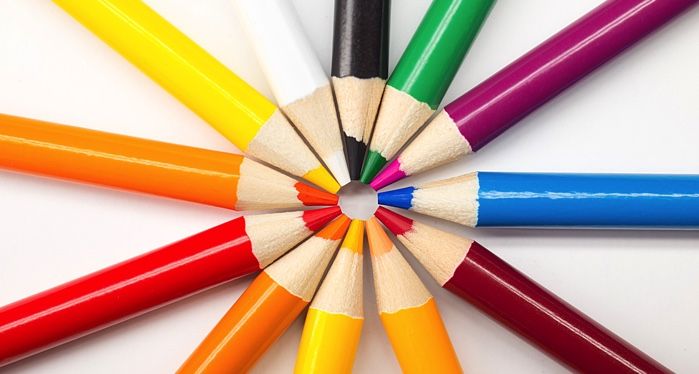
Rediscovering My Love of Coloring Books While Social Distancing
In early childhood, I used to call myself an “author and illustrator” and illustrate my own handwritten, stapled, and glued books. Later in elementary school, I read mostly novels with sparse ink illustrations—if they were illustrated at all. This shift partly explains why I stopped illustrating my stories, but also, my perfectionism had already begun. I’d already decided that I was a much better writer than a visual artist. This became a self-fulfilling prophecy when I focused almost exclusively on writing. I was competitive and afraid of being mediocre at something I loved.
Even after I stopped drawing, I still loved Disney coloring books. Although I’ve never posted fan fiction online, I used coloring books as exercises in fan fiction. When I was 9 or 10, I bought a Winnie the Pooh coloring book, which I thought I’d “outgrown.” I wrote stories in the style of A.A. Milne’s books and the Disney films, using the coloring pages as my inspiration. The beloved characters are so distinctive that they’re easy to imitate.
Around the same time, I colored in Great Illustrated Classics, as if they were makeshift coloring books. Some people may consider this defacing a book, but I bought these for 99¢ each at my local overstock book warehouse. The pictures weren’t shaded, which made them perfect for coloring. I remember coloring a condensed version of The Prince and the Pauper: the two nearly identical boys swapping lives.
I recently returned to coloring around Christmas 2020. By the end of a year of social distancing, I’d exhausted almost everything I’d ever wanted to read, write, and watch. I wanted a new, indoor hobby—that preferably didn’t require more screen time. Improving my fine motor skills was a bonus.
I’m right-handed and have cerebral palsy. Like many other people with CP, one side of my body is much stronger than the other—in my case, my right side. To rest my right hand and give my mind and body a new challenge, I can now color wide spaces, like skies, left-handed. CP affects my hand-eye coordination and fine motor skills. Sometimes my hands twitch, smudging the paper, but I don’t mind. It would make no sense to compare myself to non-disabled artists, or any visual artists who’ve been working for as long as I’ve been writing.
Literary coloring books let me rediscover fantasy characters and settings. I’ve rewatched the Lord of the Rings movie trilogy so many times I’ve reached a saturation point with it. I’ll watch scenes on TV but haven’t rewatched the entire trilogy in years. In late December, I ordered the The Lord of the Rings Coloring Book and A Court of Thorns and Roses Coloring Book. With coloring books, I enter into fantasy settings and imagine the characters. I may visualize them differently than the authors, directors, or line artists did. When I finish these two coloring books, I’ll look for ones with more diverse authors and characters. Many coloring books in English are based on mostly white fantasy series or public domain books, so these can be difficult to find.
No matter how much I love doing something, I can’t do it all day. Sometimes I try to push myself to read or write for most of the day, but end up not feeling well instead. If I tried to color all day, I’d probably hurt my muscles or joints. I find coloring fun and relaxing, but the benefits to my mental health go much deeper. I set hard limits for what I can and can’t do and accept them. I remind myself that I didn’t give up my other passions to become a writer.
Coloring books taught me creativity can be more about passion than proficiency or even an important message. Perfectionism, anxiety, and comparing myself to others are issues that creep into my writing. It’s liberating not to know or care whether I’m good at a new art form and let myself play around with it. This low-stakes feeling of imaginative play is why I originally fell in love with reading and writing. Coloring books bring me full-circle and renew my enthusiasm for writing.











